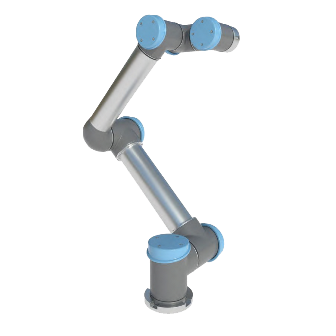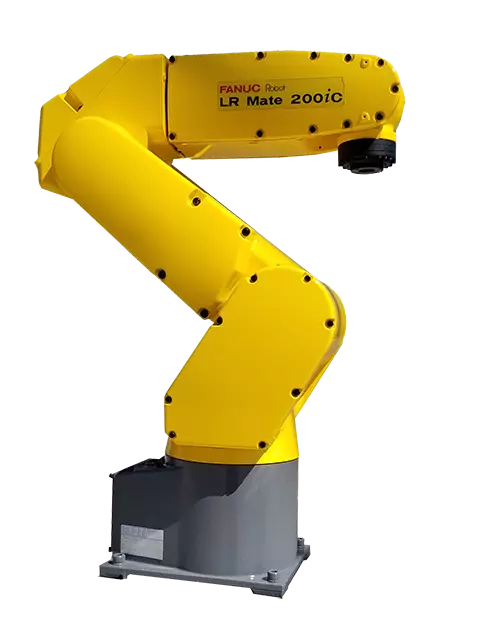Automation has become crucial to manufacturing. With labor shortages, rising costs, and e-commerce, automation allows manufacturers to optimize their operations in order to combat the challenges of modern productions. Automation creates a safer, more efficient production process that results in better quality, higher productivity, and lower costs. Companies have two options when it comes to automation, choosing between robotic and collaborative. Finding the right automation solution will come down to understanding the differences between both options.
What is Robotic Automation?
Robotic automation is the more conventional form of automating. It involves using traditional industrial robots to automatically execute manufacturing applications. The FANUC Arcmate 120ic can be programmed to automate arc welding applications. Advantages of robotic automation include speed, accuracy, and power. Since the factory robots used for this form of automation tend to be bigger while operating at fast speeds, they must be kept away from humans using safeguarding equipment. With this form of automation humans and robots cannot work simultaneously on tasks.What is Collaborative Automation?
Collaborative automation allows for humans and robot manipulators work collaboratively in manufacturing settings. Instead of using a traditional industrial robot arms like the Yaskawa MH12, collaborative robots or cobots like the Universal UR5 are used. Cobots unlike traditional robotic manipulators are designed with multiple safety features to allow for safe interactions with humans. Advantages of collaborative automation include its ease of use, flexibility, and accuracy with force sensitive work.Considerations When Choosing Between Robotic and Collaborative Automation
- • Payload - It is important to consider the maximum payload capacity you will need. Collaborative robots are lighter and smaller than traditional articulated robots, therefore their payloads tend to be lighter. Cobot payloads are 35 kg or less with most falling under 20 kg. Traditional six axis robots feature a wide range of payloads from light to extremely heavy. Those automating a high payload application will need the ABB 7600-340 or another heavy payload robot.
- • Footprint - Opting for collaborative automation will require less space than robotic automation. Most cobots are smaller than traditional robots and do not require extra safety equipment such as fencing. Those tight on space may have an easier time integrating the FANUC CRX-10ia/L in their factories. However, some industrial robotic arms do offer space saving options such as overhead or wall mounting.
- • Ease of Use - Collaborative automation is incredibly intuitive with a low learning curve. Those new to automation can benefit from the out of the box setup of cobots. Hand guidance programming is easy and quick. Robotic automation is more time consuming to implement and learn.
- • Speed - When it comes to speed and accuracy, robotic automation cannot be beat. Traditional robots are designed to operate at high speeds without compromising accuracy. Because the FANUC LR Mate 200ic along with other robots must operate away from humans, they can operate at their full speed. Cobots on the other-hand have slower operational speeds in order for them to be able to safely interact with humans. Those automating a high speed process will be better off with opting for robotic automation.
- • Cost - In general collaborative automation will be more affordable to implement. Cobots are typically less expensive than industrial robots because they do not require the purchase of safety equipment. Their quick setup and programming also keeps costs on the lower end. However, purchasing a used industrial robot can help make implementing robotic automation more cost-effective.
Robots Done Right is the place to start when it comes to used robots. Contact us if you are interested in buying or selling your used robot.

